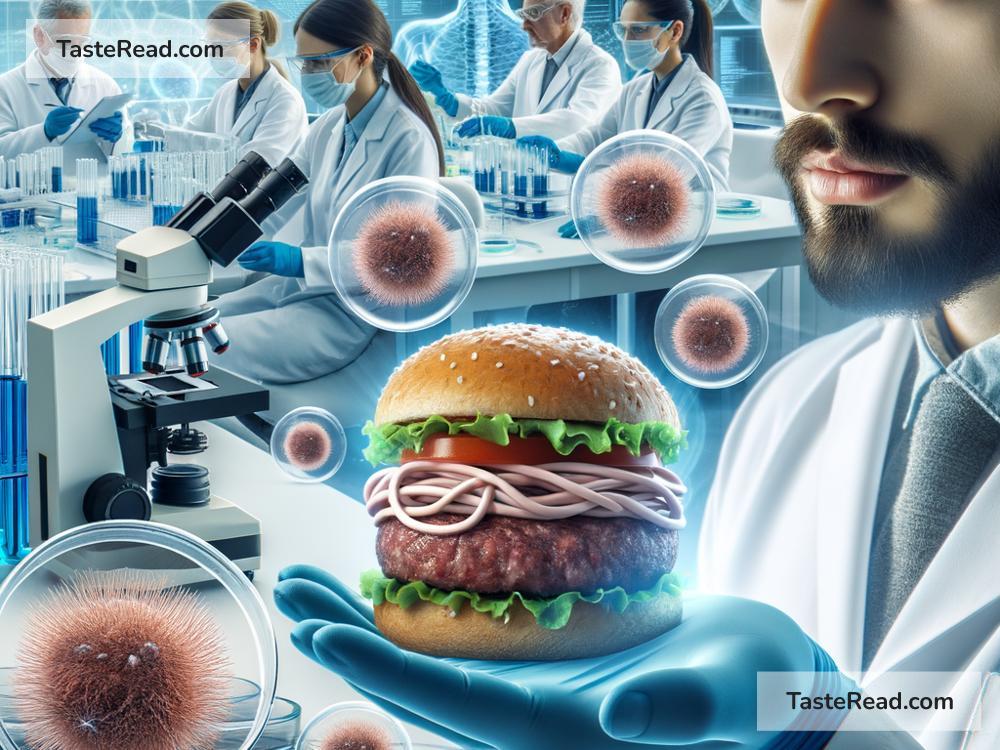The Future of Food: Understanding Lab-Grown Meat Technology
Imagine eating a juicy burger or a tender steak without knowing an animal had to be slaughtered to make it. Sounds futuristic, right? Well, this is becoming a reality, thanks to lab-grown meat technology — a groundbreaking innovation that could change the way we produce and consume food. This blog will explain lab-grown meat in simple terms, explore how it’s made, why it matters, and what the future may hold.
What is Lab-Grown Meat?
Lab-grown meat, also called cultured meat or cultivated meat, is real meat created in a lab, not on a farm. Unlike plant-based alternatives made from ingredients like soy or pea protein, lab-grown meat is biologically identical to the meat we get from animals. However, it doesn’t require raising and slaughtering animals to produce it.
Scientists grow this meat by using cells taken from an animal, such as a cow, chicken, or pig, and then cultivating them in a lab under controlled conditions. It’s the same kind of meat you’d eat from a traditional farm, but it’s made in an entirely new way, offering exciting possibilities for food production.
How is Lab-Grown Meat Made?
The process may sound complex, but it’s based on a simple idea: growing animal cells instead of raising animals. Here’s how it works:
-
Collecting Cells: Scientists start by extracting a small sample of cells from a living animal. This sample can come from muscle tissue or other parts of the animal. The process is minimally invasive and does not harm the animal.
-
Feeding the Cells: The cells are placed in a nutrient-rich solution called a “culture medium.” This solution gives the cells everything they need to grow and multiply, including proteins, vitamins, and minerals.
-
Growing in Bioreactors: The cells are then moved into a device called a bioreactor, which provides the ideal environment for growth. Over time, the cells multiply and form muscle tissue — the main component of meat.
-
Harvesting and Processing: Once the muscle tissue has grown enough, it’s harvested, shaped, and prepared for consumption. After further refinement, the lab-grown meat can be turned into burgers, nuggets, sausages, and other familiar products.
What’s great about this process is that it uses far fewer resources than traditional farming, and it avoids many of the ethical concerns tied to animal agriculture.
Why Does Lab-Grown Meat Matter?
The way we produce meat today comes with significant challenges. Raising billions of animals for food requires vast amounts of land, water, and energy. It also contributes to environmental problems like deforestation, greenhouse gas emissions, and pollution. On top of that, animal farming raises serious ethical questions about animal welfare.
Lab-grown meat offers solutions to these issues:
-
Environmental Benefits: Since lab-grown meat doesn’t involve livestock farming, it has the potential to drastically reduce greenhouse gas emissions and use less land and water. Studies suggest that lab-grown meat could be much more sustainable than traditional meat production.
-
Animal Welfare: By growing meat without slaughtering animals, this technology eliminates the suffering that often comes with factory farming practices. It’s a cruelty-free way to enjoy meat.
-
Feeding a Growing Population: The world’s population is expected to reach nearly 10 billion by 2050, and traditional farming may not be able to keep up with rising demand for food. Lab-grown meat could help ensure everyone has access to protein without depleting Earth’s resources.
-
Food Safety: Because lab-grown meat is produced in highly controlled environments, it has a lower risk of contamination from bacteria like E. coli or salmonella. It could also reduce the need for antibiotics, which are often overused in livestock farming.
What Are the Challenges?
Despite its promise, lab-grown meat is not yet widely available, and there are hurdles to overcome before it can compete with traditional meat. Some of the main challenges include:
-
Cost: Making lab-grown meat is still expensive, although prices have been decreasing rapidly as technology improves.
-
Scaling Up Production: Producing meat in large quantities that can feed millions of people is a tough task that scientists and companies are still working on.
-
Public Perception: Since lab-grown meat is unfamiliar to many people, some are hesitant to try it. Building trust and educating consumers will be critical for its success.
-
Regulatory Approval: Governments around the world need to set clear rules for the production and sale of lab-grown meat to ensure it’s safe and properly labeled.
What’s Next for Lab-Grown Meat?
Exciting developments are happening in the world of lab-grown meat. A number of companies are already making strides, such as Upside Foods, Eat Just, and Future Meat. In some countries, like Singapore, lab-grown chicken is already being sold in restaurants and stores.
As technology advances, production becomes cheaper, and awareness grows, lab-grown meat is expected to become more common in the coming years. Experts believe it could eventually replace a significant portion of traditional meat in our diets — helping us build a more sustainable, ethical, and healthier food system.
Conclusion
Lab-grown meat technology is still in its early days but holds incredible potential to transform the way we think about food. By offering a sustainable, ethical alternative to traditional meat production, it addresses some of the biggest challenges in the food industry today.
While there are still obstacles to overcome, such as affordability and consumer acceptance, lab-grown meat is a promising step toward a future where enjoying meat doesn’t come at the expense of animals or the environment.
Whether you’re an adventurous eater or someone curious about innovative ideas, lab-grown meat might be a glimpse into the future of food — a future that’s kinder to the planet, animals, and ourselves.


